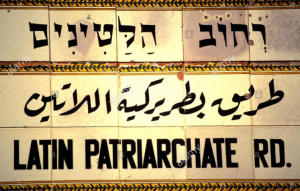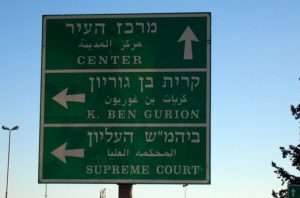Connections between Arabic and Hebrew languages
For decades, non-linguists thought Arabic and Hebrew were nearly the same. Especially Arabic speakers, who pronounce Hebrew (Ebry) and Arabic (Araby) with the same letters but with a different order. So what are the differences and similarities with Arabic and Hebrew languages ?

Quick look at both Arabic and Hebrew:
Arabic
Arabic is a Central Semitic language, closely related to Aramaic, Hebrew, Ugaritic and Phoenician. Modern Standard Arabic (MSA) is a distinct and more conservative form than all of its current spoken varieties and is the only official Arabic language (i.e. used by Arabic translators and Publishers in newspapers and magazines). It is the language of the Quran and the native language for more than 290 million people.
Hebrew
Hebrew is a West Semitic language of the Afro-Asiatic language family. Historically, it is regarded as the language of the Israelites and their ancestors, although the language was not referred to by the name Hebrew in the Tanakh (Hebrew Bible.) The earliest examples of written Paleo-Hebrew date from the 10th century BCE. Today, Hebrew is spoken by nine million people worldwide.
Similarities
Because both languages belong to the Semitic language family, they are similar. If you are an Arabic speaker/translator, you will easily notice the strong similarities between both languages when you listen to a Hebrew conversation, providing you are using MSA. Another similarity is the shared vocabulary structure, Binyanim, which dictates how verbs are conjugated.
You will also start connecting pronunciation and the sounds to figure out how similar they are and wonder “is it true that an Arabic speaker/translator can easily learn Hebrew, and vice versa, as most people think?”
The best way to answer that is to present some examples from the two languages to show how they are connected. Before we look into that, we must mention that both languages are Bidirectional, written from right to left with the same BiDi “Bidirectional” writing code when it comes to the new translation technologies.
Examples of similar words between the two languages:

| English | Hebrew pronunciation | Arabic pronunciation |
| Boy | Yeled | Walad |
| Girl | Bat | Bent |
| Sun | Shemsh | Shams |
| Peace | Shallom | Salam |
| Listen | Shemaa | Esmaa |
| Day | Yom | Yom |
Pronunciation
Arabic and Hebrew speakers with Middle Eastern backgrounds easily notice the strong pronunciation similarities they share. Both Arabic and Hebrew pronunciation systems are flexible when it comes to pronounce several vowels and some of tricky letters which most European speakers cannot easily pronounce, e.g. ح (pronounced as Ha’) & ع (pronounced as Ein). As for the Hebrew pronunciation, it is divided into two main forms/dialects: Sephardic and Ashkenazi. This causes several pronunciation issues, easily noticeable when visiting Israel.
Differences (Hebrew and Arabic alphabet system)
Hebrew and Arabic are different languages, so even though there are many similarities, there are also many differences.
- The Hebrew alphabet has 22 letters, whereas the Arabic alphabet has 28.
- Arabic letters are written in cursive; Hebrew letters cannot be joined.
- Modern Hebrew is influenced by the Romance, Slavic and Germanic languages.
- Hebrew has two main dialects: Ashkenazic dialect, used by European Jews and their descendants and Sephardic dialect, used by Jews from the Mediterranean and Middle Eastern areas.
- There are numerous Arabic dialects, including: Levantine Arabic, Mesopotamian Arabic, Egyptian Arabic, Gulf Arabic and Central Asian Arabic, plus the “MSA” Modern Standard Arabic which all these countries are using in their publications and newspapers.
Summary
Arabic and Hebrew both belong to the Semitic language family making them similar languages and the new generations can find them under the tree of the BiDi “Bidirectional“ languages. The structures, pronunciations and words resemble one another. However, they are separate languages. A native Hebrew speaker typically will not easily understand a native Arabic speaker without learning the language structure and vocabulary, and vice versa.
Written by Ahmed Mossad ElSaba
Source:






